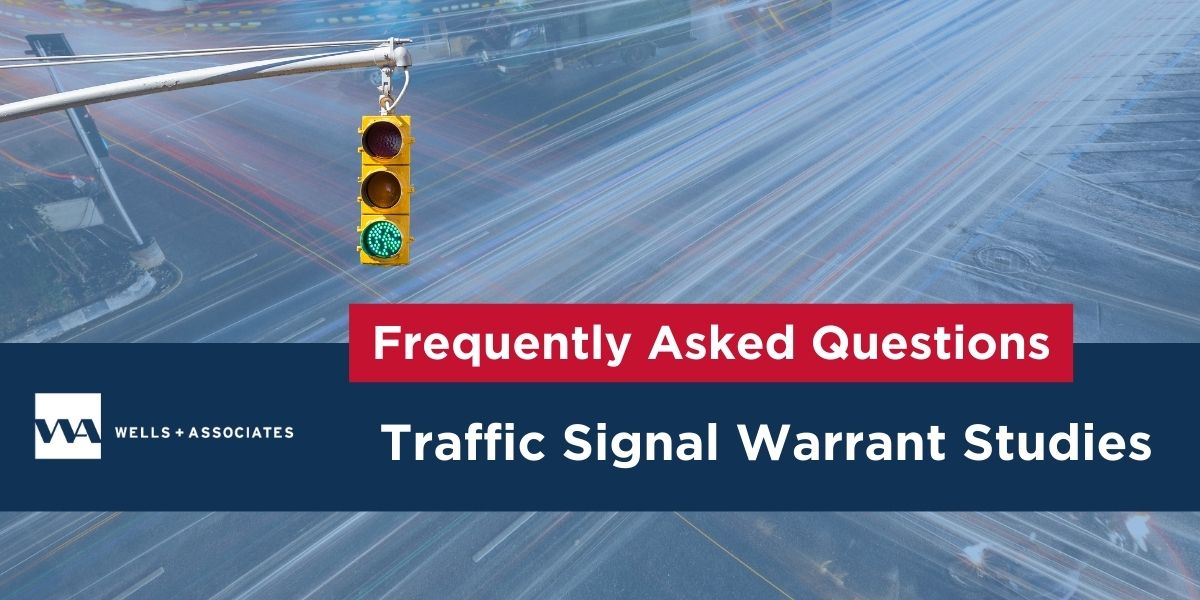What is a traffic signal warrant? What is the process for installing a traffic signal? Will my development require a traffic signal? These questions and more are answered in our Traffic Signal Warrant Studies FAQ.
Q: What is a traffic signal warrant?
A: A traffic signal warrant establishes minimum criteria for evaluating the need for a traffic signal at a specific intersection.
Q: In a traffic signal warrant study, what are the main factors that determine whether a traffic signal will be installed at an intersection?
A: Many factors are considered for the installation of a traffic signal. They include the location with respect to other intersections, traffic volumes, pedestrians, and safety. These factors are covered in the Manual on Uniform Traffic Control Devices (MUTCD).
Q: What is the MUTCD and what does it have to do with traffic signals?
A: The Manual on Uniform Traffic Control Devices (MUTCD) is a federal document that provides guidance for state and local agencies for the use and installation of traffic control devices. The MUTCD lists nine (9) items that can warrant the installation of a traffic signal. The first edition of the MUTCD was published in 1935. An 11th edition is currently under review.
Q: Is there a leading indicator or factor in determining whether an intersection warrants a traffic signal?
A: The primary consideration for the installation of a traffic signal traffic is traffic volumes. One warrant considers the highest eight (8) hours of traffic during the day for the main and minor streets volumes while two others evaluate four (4) hours of traffic and the single highest hour of traffic. The threshold of volumes per hour to satisfy a warrant are decreased when the speed of the main roadway is greater than 40 miles per hour.
Q: Is a traffic signal the only way to control traffic at an intersection?
A: In many cases, a different intersection configuration could be evaluated or implemented prior to the installation of a traffic signal. Other intersection examples include Roundabouts and Restricted crossing U-turn (RCUT).
Q: Who needs a traffic signal warrant study?
A: In many cases, a traffic signal warrant study is a requirement for a new development or redevelopment project. In other cases, an existing community, business or small town may want a traffic signal to improve access and safety. We often complete traffic signal warrant studies for property developers, cities, towns, counties and/or communities.
Q: Is a licensed Professional Engineer required to complete a traffic signal study?
A: In most cases, yes a Professional Engineer is required to complete a traffic signal warrant study.
Q: Are traffic signals warranted only for vehicular traffic? Or do signal warrant studies also include pedestrian and bike traffic?
A: A component of a warrant study includes pedestrian traffic volume and a traffic signal can be warranted when sufficient pedestrian volume is shown to be or will be crossing a roadway.
Q: After traffic signal warrants are issued, what are the typical next steps?
A: The next steps are to design the traffic signal, obtain approval from the jurisdiction, and securing a signal contractor to install the signal equipment.
Visit our Traffic Design Services Page

